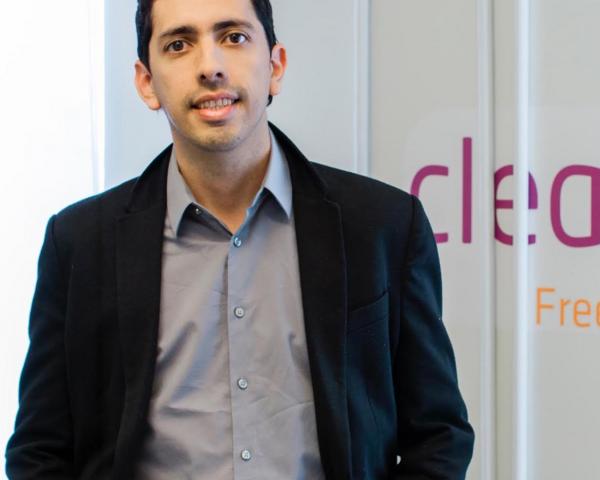Insurance fraud scams seem to make the news at least every month, as organized criminals seek to exploit the way insurers reimburse clinics, pharmacies and other providers for their services. What’s often shocking is how much money fraudsters can steal from insurers before they’re caught. Recently, in a single month, two separate alleged fraud rings based in California were busted for scams that investigators say netted $20 million or more.
Clearly, there’s a need for fraud detection tools that can spot these frauds in their early stages. Based on my experience working for a company that uses machine learning and artificial intelligence to detect e-commerce fraud, I think these tools can also help stop organized insurance fraud. One technique called group analysis seems like an especially promising approach for catching fraud rings sooner rather than later.
In this article, we’ll focus on organized health insurance fraud because it’s common, costly and hard to detect quickly using traditional screening methods. But the group analysis approach could apply to other kinds of organized insurance fraud, as well.
The health insurance fraud landscape
It’s hard to find solid, consistent numbers on the cost of health insurance fraud, in part because it’s hard to detect at scale. The National Health Care Anti-Fraud Association (NHCAA) estimates that somewhere between 3% and 10% of U.S. healthcare dollars are spent on fraud every year, which translates into as much as $300 billion annually.
While law enforcement does go after insurance fraud scams, the amount recovered doesn’t come close to the projected scale of losses. For example, in 2018, the U.S. Department of Justice recovered $2.5 billion in costs related to fraud and improper claims. That’s a lot of money, but it’s not $300 billion.
See also: Future of Insurance Is… Not Insurance
How do fraudsters get away with stealing so much money from insurers and government programs? It’s mostly because they’re professionals, and they operate on a large scale. The NHCAA says most insurance fraud is committed by organized groups, which operate a variety of scams, including:
- Filing claims for procedures and services that never happened, using stolen patient data.
- Padding legitimate claims with procedures that never happened.
- Accepting kickbacks for patient referrals for unnecessary treatments.
- Setting up fake clinics to bilk patients’ insurers out of reimbursements for marked-up procedures and prescriptions.
How AI and group analysis could help spot organized healthcare fraud
When insurers review claims individually for signs of fraud, they’re taking an approach like the one that e-commerce merchants have used for years: looking for fraud on a case-by-case basis. This is necessary, of course, because individuals do sometimes try to exploit the system. But individual claim review will miss the bigger picture.
That’s because sometimes patterns that indicate possible fraud are only visible when you look at the larger data set. That’s true no matter what type of fraud you’re trying to stop. For example, in e-commerce, a series of orders that look legitimate and raise no fraud flags can be part of a broader fraud scheme.
How is that possible?
Here’s an e-commerce example: Let’s say a merchant receives a dozen orders from different customers within an hour, all with valid payment and customer identity information. Each order passes fraud screening and gets approved.
But the merchant’s fraud protection program also conducts group analysis—looking at all the traits of each order and analyzing the entire group to spot unusual patterns. After the 12th order, the group analysis flags the entire batch of orders for further review, because every credit card used had the same bank identification number. When analysts look at the group analysis data and individual orders, it’s apparent that criminals compromised a batch of different cards issued by a single bank and used them to go shopping online. The orders are canceled, and the merchant avoids losses.
Insurance fraud investigators already look for big-picture patterns, of course. Federal, state and local law enforcement agencies deploy hundreds of people who spend thousands of hours checking out possible fraud rings based on intelligence and patterns of behavior, then collecting evidence to make arrests. But group analysis has the potential to help investigators identify suspicious patterns faster, to limit fraud losses.
For example, a fraud ring in California is currently facing charges for an elaborate, two-year scheme that investigators say stole $19 million from TRICARE and $3 million from another insurer. According to the indictment, the ruse included two fake pain clinics set up by the fraudsters, kickbacks to a doctor for referring TRICARE and ILWU policyholders to the fake clinics and fraudulent prescriptions and refill requests for pain creams billed to those insurers at up to $15,000 per tube.
The part of the story that stands out is that the ring’s operations were at their peak five years ago, but the alleged fraudsters are only now facing charges. It seems unlikely the insurers would be able to recover the stolen funds after so much time.
See also: Empowering Health Through Blockchain
How could group analysis make a difference in a complex case like this? It’s clear that each claim on its own passed the insurers’ fraud review. And it’s also clear that someone eventually spotted a pattern or received information about possible organized fraud.
However, a machine learning system continuously analyzing claims for large-scale patterns might flag many claims based on referrals of patients with the same insurance by one doctor to two specific (and recently opened) clinics. Or the system might detect an unusually large number of prescriptions for very expensive creams coming from the pharmacy. As more data comes in, AI-driven systems get smarter about which patterns might be fraud and which might not. And, depending on the pace and timing of the claims, group analysis could spot fraudulent patterns in days, weeks or months, rather than years.
Group analysis and AI could change the health fraud landscape
Giving health insurers and fraud investigators AI tools can do more than save money. These analytics tools could also reduce the number of patients who are subject to bogus treatments because fraudsters want to exploit their insurance coverage. And faster intervention could also discourage some fraudsters from making the effort. After all, why build fake clinics and find corrupt practitioners if the whole operation could be shut down before it’s profitable?
Fighting fraud is a task that may never end. But by making it harder for criminals to succeed, AI-based group analysis could give investigators a powerful way to fight back faster against organized insurance fraud.






